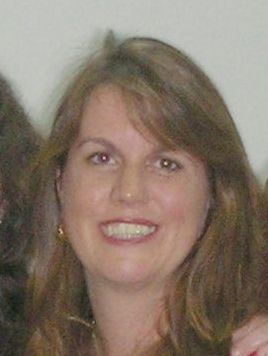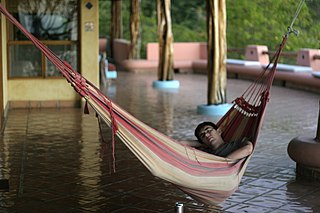Related Research Articles

Caffeine is a central nervous system (CNS) stimulant of the methylxanthine class. It is mainly used as a eugeroic (wakefulness promoter) or as a mild cognitive enhancer to increase alertness and attentional performance. Caffeine acts by blocking binding of adenosine to the adenosine A1 receptor, which enhances release of the neurotransmitter acetylcholine. Caffeine has a three-dimensional structure similar to that of adenosine, which allows it to bind and block its receptors. Caffeine also increases cyclic AMP levels through nonselective inhibition of phosphodiesterase.
Multiple hypotheses explain the possible connections between sleep and learning in humans. Research indicates that sleep does more than allow the brain to rest; it may also aid the consolidation of long-term memories.

A siesta is a short nap taken in the early afternoon, often after the midday meal. Such a period of sleep is a common tradition in some countries, particularly those in warm-weather zones. The "siesta" can refer to the nap itself, or more generally to a period of the day, generally between 2 and 5 p.m. This period is used for sleep, as well as leisure, mid-day meals, or other activities.

Gregg Edmund Easterbrook is an American writer and a contributing editor of both The New Republic and The Atlantic Monthly. He has authored ten books, and writes for op-ed pages, magazines, and journals.
Polyphasic sleep is the practice of sleeping during multiple periods over the course of 24 hours, in contrast to monophasic sleep, which is one period of sleep within 24 hours. Biphasicsleep refers to two periods, while polyphasic usually means more than two. Segmented sleep and divided sleep may refer to polyphasic or biphasic sleep, but may also refer to interrupted sleep, where the sleep has one or several shorter periods of wakefulness, as was the norm for night sleep in pre-industrial societies.

A power nap or cat nap is a short sleep that terminates before deep sleep. A power nap is intended to quickly revitalize the sleeper.
LexisNexis is an American data analytics company headquartered in New York, New York. Its products are various databases that are accessed through online portals, including portals for computer-assisted legal research (CALR), newspaper search, and consumer information. During the 1970s, LexisNexis began to make legal and journalistic documents more accessible electronically. As of 2006, the company had the world's largest electronic database for legal and public-records–related information. The company is a subsidiary of RELX.
Sleep inertia is a physiological state of impaired cognitive and sensory-motor performance that is present immediately after awakening. It persists during the transition of sleep to wakefulness, where an individual will experience feelings of drowsiness, disorientation and a decline in motor dexterity. Impairment from sleep inertia may take several hours to dissipate. In the majority of cases, morning sleep inertia is experienced for 15 to 30 minutes after waking.

Sleep hygiene is a behavioral and environmental practice developed in the late 1970s as a method to help people with mild to moderate insomnia. Clinicians assess the sleep hygiene of people with insomnia and other conditions, such as depression, and offer recommendations based on the assessment. Sleep hygiene recommendations include: establishing a regular sleep schedule; using naps with care; not exercising physically or mentally too close to bedtime; limiting worry; limiting exposure to light in the hours before sleep; getting out of bed if sleep does not come; not using bed for anything but sleep and sex; avoiding alcohol as well as nicotine, caffeine, and other stimulants in the hours before bedtime; and having a peaceful, comfortable and dark sleep environment. However, as of 2021, the empirical evidence for the effectiveness of sleep hygiene is "limited and inconclusive" for the general population and for the treatment of insomnia, despite being the oldest treatment for insomnia. A systematic review by the AASM concluded that clinicians should not prescribe sleep hygiene for insomnia due to the evidence of absence of its efficacy and potential delaying of adequate treatment, recommending instead that effective therapies such as CBT-i should be preferred.

Caffeine dependence is a condition characterized by a set of criteria, including tolerance, withdrawal symptoms, persistent desire or unsuccessful efforts to control use, and continued use despite knowledge of adverse consequences attributed to caffeine. It can appear in physical dependence or psychological dependence, or both. Caffeine is one of the most common additives in many consumer products, including pills and beverages such as caffeinated alcoholic beverages, energy drinks, pain reliever medications, and colas. Caffeine is found naturally in various plants such as coffee and tea. Studies have found that 89 percent of adults in the U.S. consume on average 200 mg of caffeine daily. One area of concern that has been presented is the relationship between pregnancy and caffeine consumption. Repeated caffeine doses of 100mg appeared to result in smaller size at birth in newborns. When looking at birth weight however, caffeine consumption did not appear to make an impact.

Elizabeth Johnson Kostova is an American author best known for her debut novel The Historian.

The Historian is the 2005 debut novel of American author Elizabeth Kostova. The plot blends the history and folklore of Vlad Țepeș and his fictional equivalent Count Dracula. Kostova's father told her stories about Dracula when she was a child, and later in life she was inspired to turn the experience into a novel. She worked on the book for ten years and then sold it within a few months to Little, Brown and Company, which bought it for US$2 million.

The Jenny Jones Show is an American first-run syndicated talk show that was hosted by Jenny Jones. Taped at the NBC Tower in Chicago, the show ran for twelve seasons from September 16, 1991, to May 21, 2003. It was conceived as an alternative to the tabloid talk shows of the early 1990s, and initially followed a traditional talk show format. However, the show reformatted for its second season, in which it shifted its focus to single-topic panel discussions with everyday people. These topics were often sensational, with the guests discussing their varying experiences and viewpoints. These discussions were moderated by Jones, who placed a heavy emphasis on audience interaction. Live musical performances were frequently featured during makeover segments or at other breaks in the show.

A nap is a short period of sleep, typically taken during daytime hours as an adjunct to the usual nocturnal sleep period. Naps are most often taken as a response to drowsiness during waking hours. A nap is a form of biphasic or polyphasic sleep, where the latter terms also include longer periods of sleep in addition to one period. For years, scientists have been investigating the benefits of napping, including the 30-minute nap as well as sleep durations of 1–2 hours. Performance across a wide range of cognitive processes has been tested.

Caffeine is a bitter, white crystalline xanthine alkaloid that acts as a psychoactive stimulant drug. It can have both positive and negative effects on different aspects of memory.

The relationship between sleep and memory has been studied since at least the early 19th century. Memory, the cognitive process of storing and retrieving past experiences, learning and recognition, is a product of brain plasticity, the structural changes within synapses that create associations between stimuli. Stimuli are encoded within milliseconds; however, the long-term maintenance of memories can take additional minutes, days, or even years to fully consolidate and become a stable memory that is accessible. Therefore, the formation of a specific memory occurs rapidly, but the evolution of a memory is often an ongoing process.

A Gate at the Stairs is a novel by American fiction writer Lorrie Moore. It was published by Random House in 2009. The novel won Amazon.com's "best of the month" designation and was a finalist for the PEN/Faulkner Award and the Orange Prize for Fiction.

Deanna Merryman is an American actress, glamor model, and fitness model. She was part of Playboy's Great Lingerie Model Search in 1997 and was a contestant in the Miss Hawaiian Tropic beauty pageant in 1998; later becoming a model for Hawaiian Tropic. The next year, she was featured on the cover of Iron Man Magazine.

Sleep deprivation – the condition of not having enough sleep – is a common health issue for students in higher education. This issue has several underlying and negative consequences, but there are a few helpful improvements that students can make to reduce its frequency and severity.

Denise Cai is an Assistant Professor of Neuroscience at the Icahn School of Medicine at Mount Sinai.
References
- ↑ Gose, Tia (25 May 2010). "Sara Mednick, psychologist". Science Communication Interviews. University of California Santa Cruz.
- ↑ "Should We Nap at Work?" Good Morning America Transcript, ABC News, January 29, 2007, LexisNexis.
- ↑ Lucy Broadbent, "No Snooze is Bad News," The Times, March 20, 2004, LexisNexis.
- ↑ "The Workplace Coffee Effect" September 2, 2010, New York Times
- ↑ Neal Conan, "It's Time You Took a Nap," Talk of the Nation, National Public Radio, June 25, 2007, NexisLexis.
- ↑ Mednick, Sara (February 2007). "Waking up to Sleep: Catching up on Sleep" (One of several conference videos). The Science Network. Retrieved 2010-10-09.
- ↑ Easterbrook, Gregg (January 2009). "Defense, and cheerleaders, highlight wild-card weekend". ESPN.com Online Magazine. Retrieved 2009-01-06.